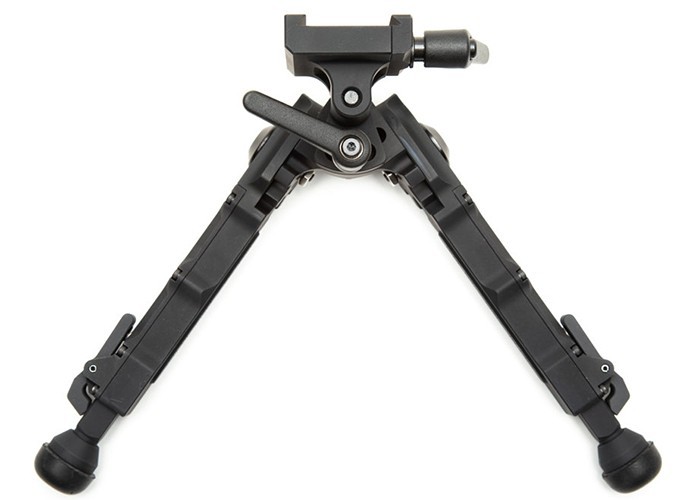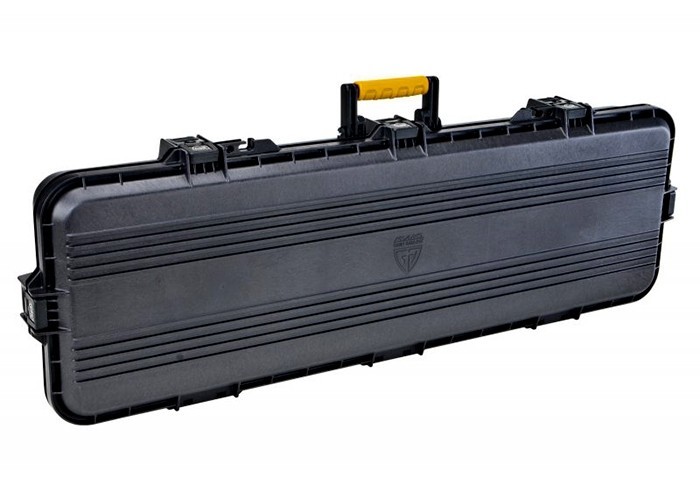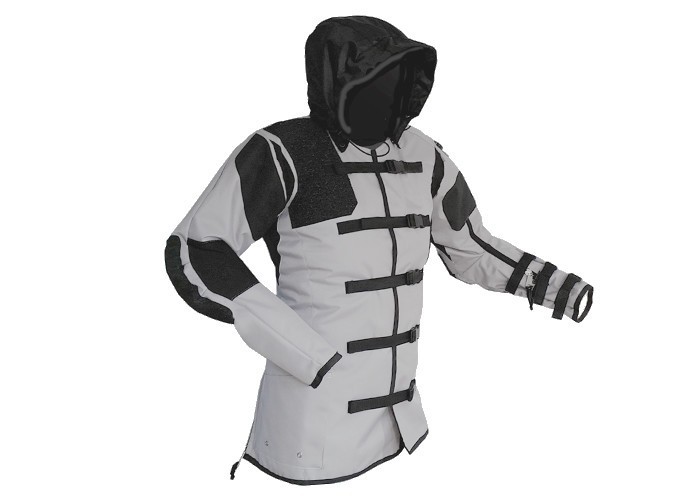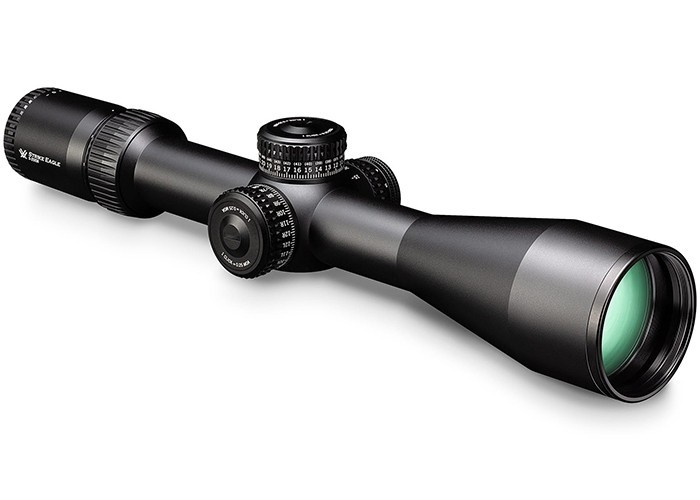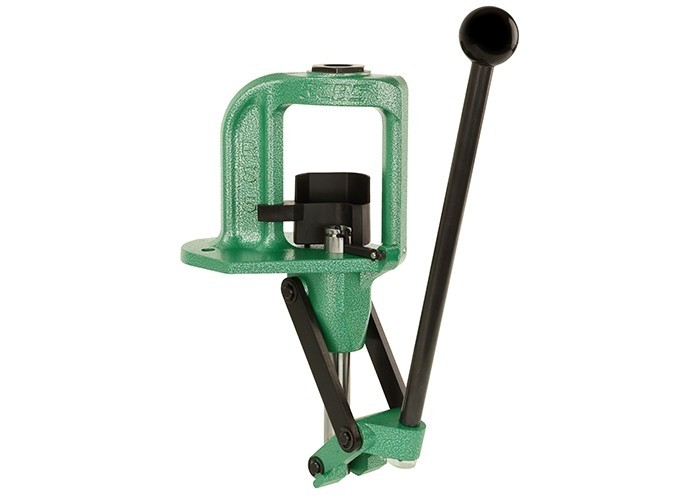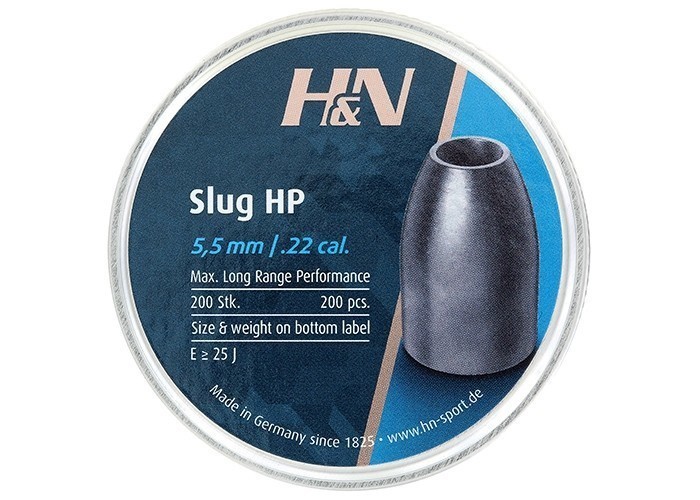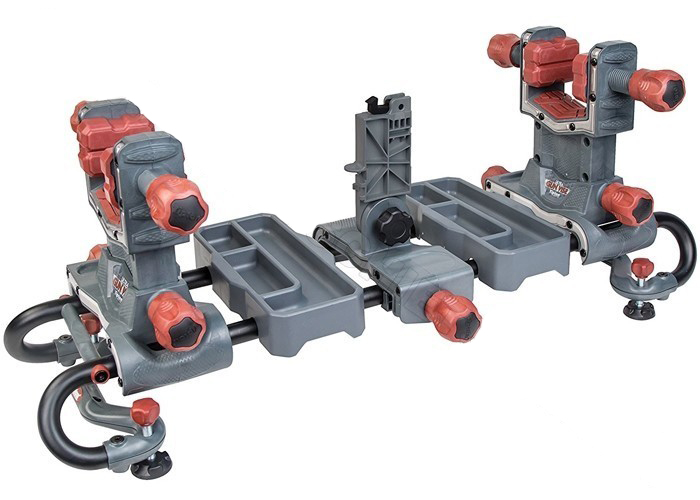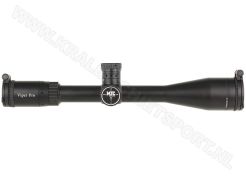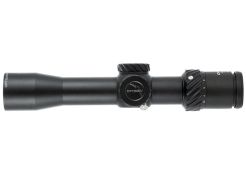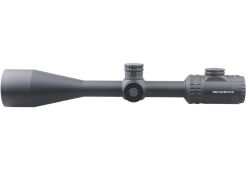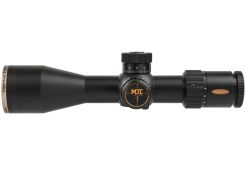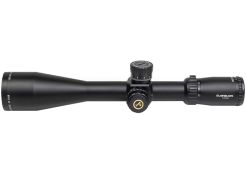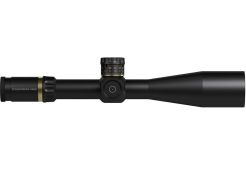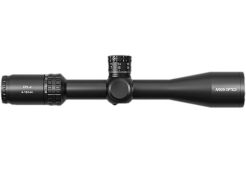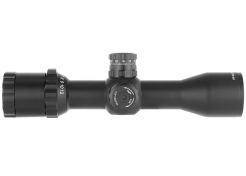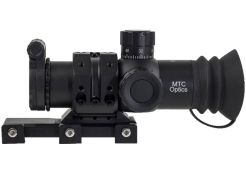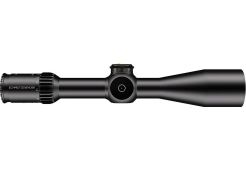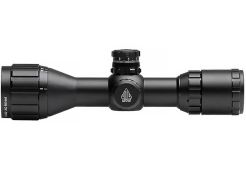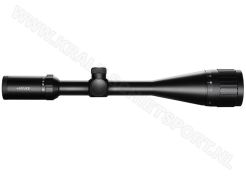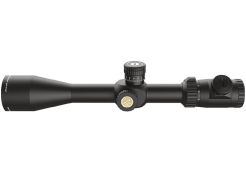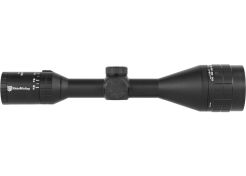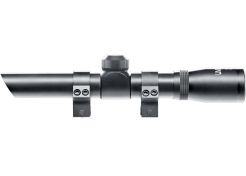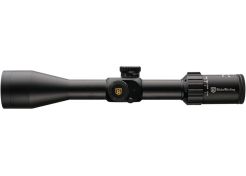 Rifle scope Nikko Stirling Diamond FFP 6-24x50 Skeleton HMDIn stockRegular Price 391.40 Special Price 332.69
Rifle scope Nikko Stirling Diamond FFP 6-24x50 Skeleton HMDIn stockRegular Price 391.40 Special Price 332.69-
 Fast & secure delivery
Fast & secure delivery -
 Secure shopping & payment
Secure shopping & payment -
 Lots of expertise
Lots of expertise
-
-
 Fast & secure delivery
Fast & secure delivery -
 Secure shopping & payment
Secure shopping & payment -
 Lots of expertise
Lots of expertise
-
-
 Fast & secure delivery
Fast & secure delivery -
 Secure shopping & payment
Secure shopping & payment -
 Lots of expertise
Lots of expertise
-
How to use a rifle scope?
A rifle scope is, simply said, nothing more than a collection of optical lenses inside a tube that’ll enhance an image. Just like binoculars or a telescope, but with the addition of a reticle to take aim. Once properly secured to your rifle and adjusted, a rifle scope is very easy to use.
The rifle scope is installed to the gun by means of mounts, and takes over the role of open sights. Open sights can work very well at shorter distances, but at longer distances you’ll definitely need a rifle scope. It will enhance the view of the target, to take a more accurate aim as you can see more details. Place the mounts as far apart as possible for the most stable support. And don’t overtighten them to prevent the rifle scope tube from distorting.
Make sure that you’ve got the correct eye relief, this is the distance between your eye and the ocular of the rifle scope (the lens you’re looking at). A correct eye relief is easily recognised as a clear image with a full field of view, without dark or blurry edges. Shoulder your rifle (or take a shooting stance with your pistol) and adjust the scope to front or rear in a way that you’ll get a clear image.
With that done, you choose the desired magnification and adjust the scope to be parallax free. Parallax seems quite mysterious, but is in fact really simple. After reading the following text, you’ll never see parallax as something incomprehensible anymore.
The parallax of a rifle scope
Parallax is a word of which many don’t know the meaning, just that it exists in our rifle scopes. And that it can have an effect on accuracy. Well, to put it in a nutshell: parallax is the phenomenon where the focal point of the reticle and the focal point of the objective don’t come together in the same place. It’s easy to see when that happens, as when you’re moving your head a bit, the reticle seems to be floating over the target.
Parallax can be adjusted in two ways. Some gun scopes have an adjustable objective (AO), while others have what is called a side focus turret on the left side, opposite from the windage turret. The clue is in the name, as getting rid of parallax is just a case of focussing until the image is clear and sharp. The reticle already is focussed (unless you’ve got an eye deficiency, in which case you adjust the ocular accordingly). With the reticle and image both focussed, their focal points will come together in one point, cancelling the parallax. You can check by moving your head a little behind the rifle scope. The reticle shouldn’t be floating over the target anymore, but sit right on it.
Fun fact: parallax will differ per distance. Which means parallax can be used to determine distances too. This is something that’s taken to the next level in Field Target air rifle shooting, where it isn’t allowed to adjust the reticle. To work around that limitation, the shooters use air rifle scopes with immense magnifications. The more you magnify, the more accurate your focus-adjustments can be. And with that, it’s easy to determine the distance, as each distance has its own focus point. With that information, you know how much hold over (or under) you should apply.
How to set up a rifle scope
With all information above now digested, it’s time to zero the rifle scope. Just like parallax, it’s something lots of people anticipate as something difficult. In reality though, it’s very straightforward.
First thing to do is make sure your rifle is supported under the forend for a steady aim. Aim at the target and pull the trigger. The point of impact won’t be right on target, but that doesn’t matter. Just fire a couple more shots to get a nice group. Now keep the rifle scope aimed at the target, making sure you absolutely don’t move the rifle, and use the turrets to move the reticle over the group you just shot. That’s it, setting up or zeroing a rifle scope is just a matter of calibrating the reticle by placing it on the point of impact.
Now the rifle scope is set up properly, you can try shooting at different distances (making sure you adjust the parallax accordingly). If you’ve got a reticle with markings, take note how much higher or lower the point of impact is at different distances. With that information, you don’t need to zero your rifle scope when occasionally shooting at a different distance, you just hold over or under.
What do the numbers on a rifle scope mean?
All rifle scopes we’ve got on offer have a range of numbers in their name. For example: 12x56 or 3-9x42. These numbers will tell you two important things, with which you can quickly determine if the gun scope will be right for you. It’s easy to decipher, as long as you know what you’re looking at. Which is what we’re going to explain to you now.
The numbers in front of the ‘x’ indicate the magnification. A single number means the rifle scope has a fixed magnification, while two numbers separated with a – will tell you the gun scope has a variable magnification. So, first example tells you the rifle scope has a fixed magnification of 12x. The second example indicates a rifle scope with 3x zoom, where the initial magnification is 3x and the maximum magnification 9x. The amount of magnification is shown besides the zoom ring on the rifle scope.
And finally, the number at the end of the sequence is there to tell you the diameter of the objective, which is the lens at the front of the rifle scope that catches the light. The bigger the diameter, the more light can get through, which makes for a brighter, more detailed image. Lenses can get a better light transmittance through multiple coatings too, but as a rule of thumb, the bigger the objective, the better the rifle scope can be in twilight and at long distances. A bigger objective also provides a wider field of view.
What are MOA, MRAD and MIL?
MOA stands for Minute of Angle and MRAD stands for milliradian, which is sometimes also named MIL. This is where the often-heard term ‘Mil-dot’ comes from, which is a dot-shaped marking on the reticle with MRAD/MIL dimensions. Both MOA and MRAD are units for measuring an angle. The crosshairs and markings of reticles often are dimensioned in MOA or MRAD and the turrets for adjusting the reticle are constructed in such a way, that one click is a certain part of a MOA or MRAD.
MOA
In MOA, a 360 degrees circle is divided in minutes, where 1 degree holds 20 minutes. This means a circle is divided in 7200 small parts, that allow you to determine size and height/width at a given distance. For instance, 1 MOA is 1 inch at a distance of 100 yards, or 2.54 centimetres at 91.44 metres. At 200 yards, 1 MOA stands for 2 inches, et cetera. Often, ¼ MOA is used, meaning ¼ inch at 100 yards (0.64 mm at 91.44 metres).
MRAD
A radian compares roughly to 57.3 degrees in a circle. That’s not accurate at all of course. But by dividing the radian in milliradians, the radian is split in a 1000 parts, making a circle consist of 6283 milliradians. 1 MRAD means 10 centimetres at 100 metres, but often, tenths of an MRAD are used, where 0.1 MRAD is the same as 1 centimetre at 100 metres, 2 centimetres at 200 metres, et cetera.
The difference between MOA and MRAD is mainly the fact that the first is Imperial, while the latter is metric. If you’re used at calculating in inches and yards, MOA will be easiest to get used to. However, when you’re a millimetres and metres kind of person, MRAD will feel more intuitive. MOA is a bit more exact, which can have its advantage at extreme long distances. In steps of ¼ MOA, you’re calculating with a tad more than half centimetres at 100 metres, while 0.1 MRAD will use centimetres at the same distance. However, MRAD (decimals) is often found to be much easier to calculate with.
Which rifle scope for which distance?
Choosing the best rifle scope for a certain distance isn’t very straightforward, as it has a lot to do with personal preferences. We can give you some pointers though. For instance, it wouldn’t be very useful to use a 3x magnification at a distance of a 100 metres. The image wouldn’t be detailed enough for an accurate aim. When shooting at longer distances, you really need a good magnification to be able to aim accurately at the target. However, when you’re shooting at 10 metres, a 24x magnification will be way too much. This is because not only the image, but also your micro-movements are greatly enhanced, making it nearly impossible to hold the reticle still over the target. That’s the story in big lines, but we can add some nuance and give you some pointers.
Regarding the amount of magnification, there will be a lot of overlap. So, what you’ll read below, is just a rough advice:
- 50 metres – Up to 50 metres, a 3-9x or 4-12x rifle scope will do just fine. There’s enough magnification to get a detailed image, while the view is still nice and stable.
- 100 metres – A good example of a long-range rifle scope often used on 100 metres is one with a magnification around 24x. The image is then stable, yet detailed.
- Benchrest – As you’ve got significantly less movement when shooting benchrest, magnifications of 40x or even 50x are possible without the image getting too wobbly. In Field Target, large magnifications are used to calculate distances by means of parallax adjustment. More about that in a minute.
What it comes down to, is that choosing the right magnification is for a big part personal preference. And there’s a large overlap in distances and magnifications. There’re two things you need to keep in mind:
- Too little magnification on a great distance doesn’t offer you a very detailed image of the target. You still won’t see enough of where you’re aiming at.
- A too large magnification will give you lots of details, but you won’t be able to see them, as your micro-movements are also enhanced greatly. Unless you clamp the gun down, the reticle will keep on swaying over the target. The more you zoom in, the more intense the movements will get. This will result in overcompensation of your muscles, making for even more movement.
So, choose a magnification that’ll show you the target as big as possible, without the image getting too instable for a proper aim.
What is the best rifle scope for a .308 rifle?
We get this question a lot, hence we thought it wise to give you a proper answer here. The bigger the calibre, the bigger the recoil, the more impact a rifle scope gets to endure is the popular believe. And in a way, this is true. However, recoil is a one-way power, which means it’s relatively easy to construct a rifle scope in such a way that it can cope with that power. Asking which rifle scope is best for a .308 rifle is asking which rifle scope can endure the biggest impact and the answer might surprise you.
It might sound strange, but the best rifle scope for a .308 rifle is a rifle scope that’s suitable for a springer airgun. Many regard an air rifle as ‘that little break barrel’, but a ‘little break barrel’ air rifle scope will be the most robust scope you’ll ever see. The reason is that a springer airgun will wreak havoc to any rifle scope it is mounted on. Not only is there the conventional recoil. As the piston will abruptly come to a stop on a tiny buffer of air in top of the cylinder, it creates a forward recoil too, before bouncing back slightly and coming back again to rest. On top of that, the spring will vibrate and resonate. All of this will give the rifle scope a furious shaking, with forces coming from multiple directions, making them way more destructible than any .308 ever could.
So, if you’re looking for a rifle scope that can withstand the heavy recoil of a .308 rifle, you just have to make sure that the rifle scope you buy is suitable for a springer airgun, as those are the most robust ones available. And luckily for you, all the rifle scopes we’ve got for sale are suitable for springer airguns, which means a .308 will be a breeze for them. A 4k Swarovski might be a tad overkill on a springer, but hey, it’s good to know it’s solid enough to withstand the abuse.
What is the best rifle scope?
Choosing the best rifle scope for you doesn’t have to be difficult. Just make a list for yourself of what you’ll need from a rifle scope. The magnification has been mentioned above, but there’s also the reticle, which can be situated in the first or second focal plane (FFP or SFP).
A first focal plane reticle will be enhanced while you zoom in. This has the advantage that the markings will stay true to the image, helping you to calculate size and distance. A second focal plane reticle will not enhance when zooming, but this also means the crosshairs won’t get thicker, possibly obscuring the target from view when great magnifications are used. Often, a SFP is also a bit cheaper to construct.
When the background is dark or you’re shooting in twilight, an illuminated reticle, where the middle lights up, can be quite handy. Dark crosshairs will disappear against a dark background and an illuminated one will still be able to provide you with a proper aim.
When you’re always shooting at a fixed distance, a simple reticle without markings will do just fine. Two crosshairs and you’re done, so to say. But if distances fluctuate, markings are needed to hold over or under, discarding the need to constantly adjust the reticle. Markings can also, as said above, help to calculate distances and estimate size.
Some digital rifle scopes have a built-in laser rangefinder. A smart rifle scope like that will display the distance to the target on the display. With rifle scopes like that, you can often choose multiple reticles and some of them will still have markings. They are not needed to calculate distance anymore, but can still be used for hold over or under, compensating in height at different distances.
The quality of a rifle scope greatly depends on the lenses that are used. The best rifle scopes have lenses that are extremely clear and pure and feature multiple coatings that make for even better light transmittance and perfect contrast and true colour display. Such lenses come with a price tag, but especially in twilight and at large distances, they’re really worth it.
Worth mentioning too, are pistol scopes. Because of the shooting distance and the method of aiming, only a small magnification is used, for example 2x. As you can understand, the eye relief is much greater with a pistol than with a rifle. That’s why a rifle scope wouldn’t work on a pistol and a special pistol scope is needed.
Buying a rifle scope
By now, you should know a thing or two about rifles scopes. Of course, these are the basics and there’s more in-depth knowledge for specific scopes and situations. So, if you do have some questions left, please feel free to ask our experts for advice. They can be contacted by e-mail, chat or telephone. And, of course, if you happen to be in the Netherlands, you can always drop by for a cuppa and have a chat. We’ll make sure you’ll be able to make a well-considered choice when buying one of our rifle scopes.







